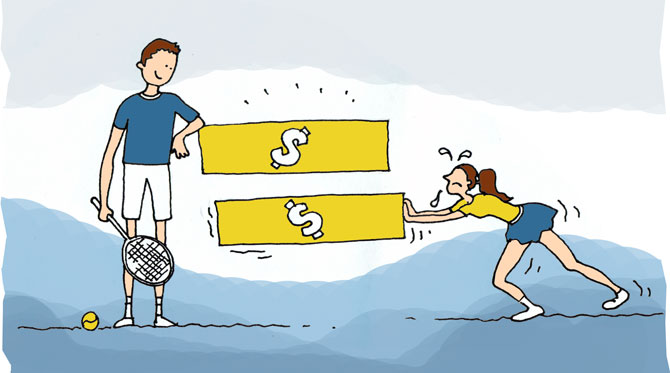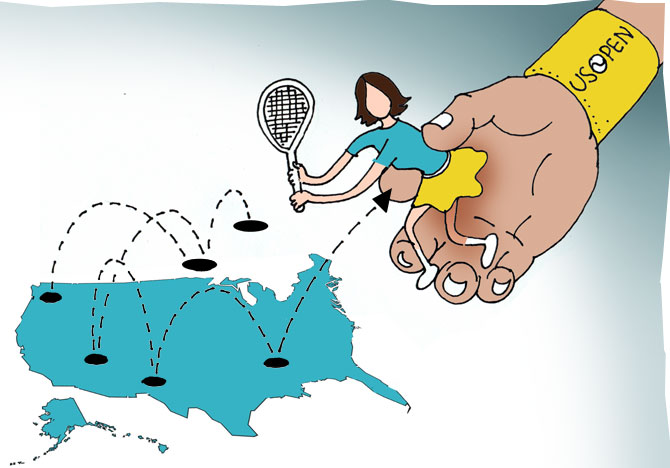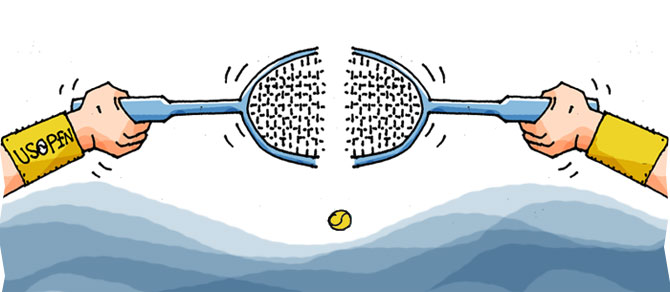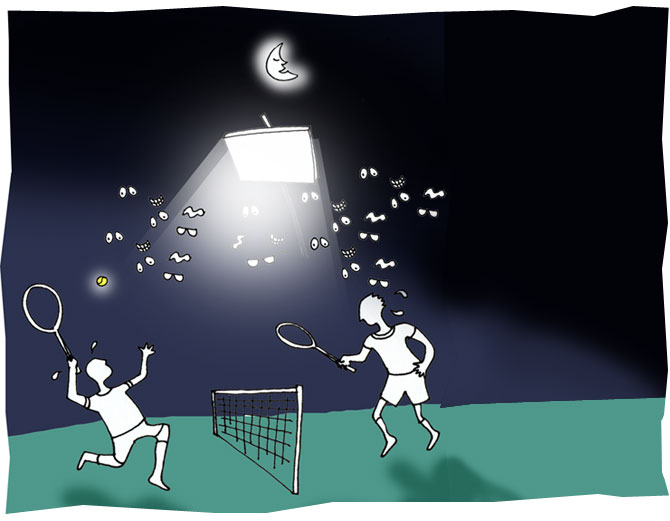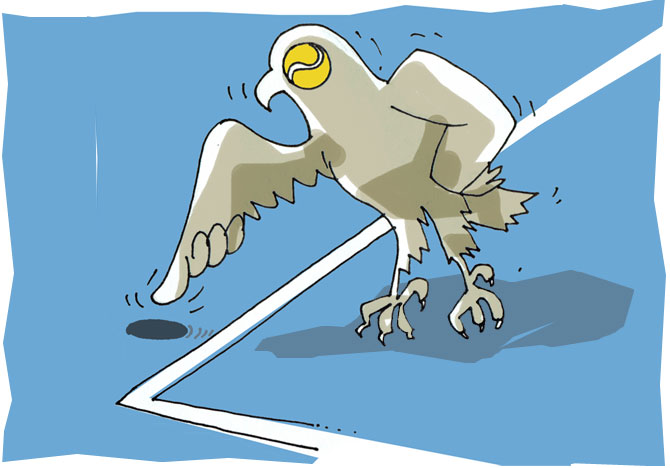 | « Back to article | Print this article |
The US Open has awarded equal prize-money for 40 years
Ahead of the latest edition of the year's last Grand Slam, which starts in a few days, Bikash Mohapatra serves up the innovations the tournament has seen over the years.
If Wimbledon is all about tradition, the US Open is about innovation.
In it's 132 years of existence, the year's final major hasn't hesitated to experiment and, as such, has many firsts to its credit.
It is this attribute that makes it different from the other majors.
Equal prize money to men and women
It's an issue that's been the bone of contention ever since tennis became a professional sport in 1968.
In the initial years, the women's singles champions at majors took a little more than a third of what the men's champion earned.
After debates that raged on for years, the Australian Open allowed equal pay only at the turn of the century (2001). The French Open did so five years later.
In fact, women demanded equal pay for years at Wimbledon before the tournament obliged, in 2007.
However, when it came to the US Open there's no scope for debate.
The tournament has been awarding equal prize-money for the past 40 years.
In 1973, both the champions, John Newcombe and Margaret Court, took home US $25,000.
Illustrations: Dominic Xavier
The tournament survived the two World Wars
Uninterrupted action
The US Open was first played in 1881, with the women's competition starting six years later.
It's been a regular feature on the calendar ever since.
All the other three majors suffered interruptions twice in their history, with no tournament held during the years of the two World Wars (1914-19 and 1941-45).
However, the US Open wasn't quite affected by the wars.
The tournament has had many venue changes
Located, then relocated
The French Open is played in Paris since its inception. The All England Club is always the venue for Wimbledon.
The US Open, on the other hand, faced many relocations.
First played at the Newport Casino, Rhode Island, it moved to the West Side Tennis Club at Forest Hills in 1915.
Between 1921 and 1923 the tournament was played at the Germantown Cricket Club in Philadelphia before it returned to Forest Hills in 1924.
Finally, the tournament moved to the Flushing Meadows in 1978, and has been there since.
Along with the Australian Open, this is one tournament that has had its share of travels.
The lone major to be played on three different surfaces
Surface tensions
The US Open remains the lone Grand Slam to be played on three surfaces.
First played on the grass courts of Newport, the green lawns were continued with even when the tournament moved to New York (Forest Hills).
However, between 1975-77, the tournament was played on clay courts, albeit of the American variety.
The green American clay was a faster surface than the European red clay but not as popular.
In 1978, the tournament was shifted to a hard court and it has been the surface used since.
Tie-break, in the fifth set
Not quite keen on a 'tie'
In 1970, the US Open became the major to use a tie-breaker to decide a set that reached a 6–6 score in games.
Soon after it became the lone major to have tie-breaks in every set, including the last.
The other three major tournaments have tie-breaks in every set other than the last, meaning it continues until a two-game lead is reached.
In New York, they like to keep it short.
Night matches were first played in 1975
Let there be light
In 1975, floodlights were introduced at the US Open for the first time, thereby ensuring night play for the first time.
Since then the tournament has regularly featured night matches.
In fact, in recent years all the big ticket fixtures have taken place under the lights.
Instant reviews have become very popular
Instant review
More recently, in 2006, the US Open became the first major to use instant replay reviews of calls.
The Hawk-Eye system was brought into operation and each player was allowed three challenges per set, and an additional one during the tie-break.
The move was an instant success.
